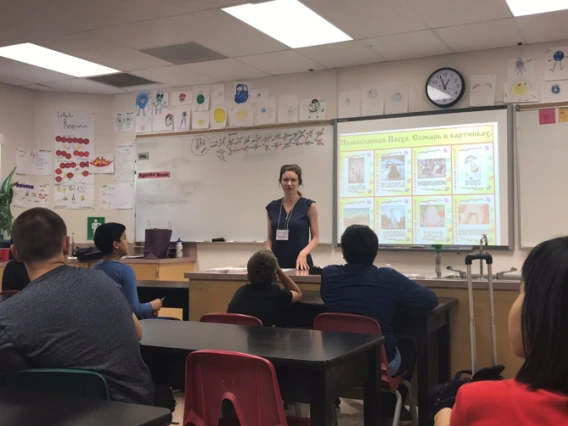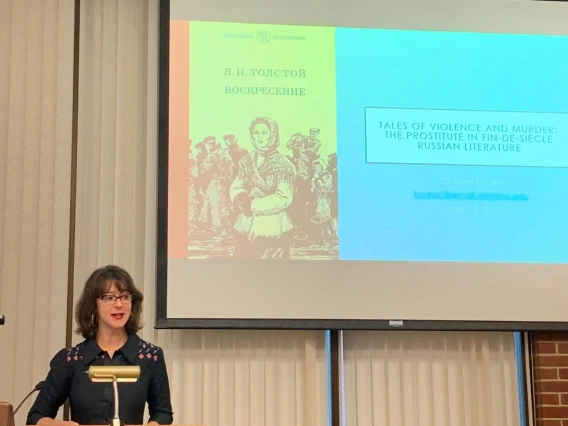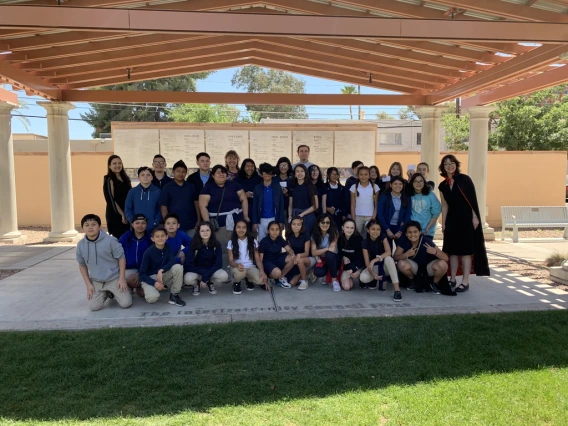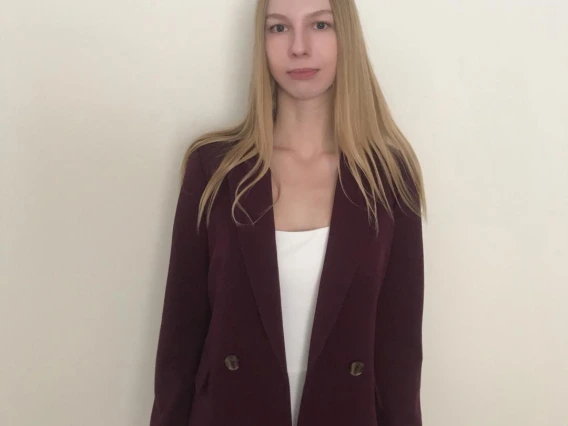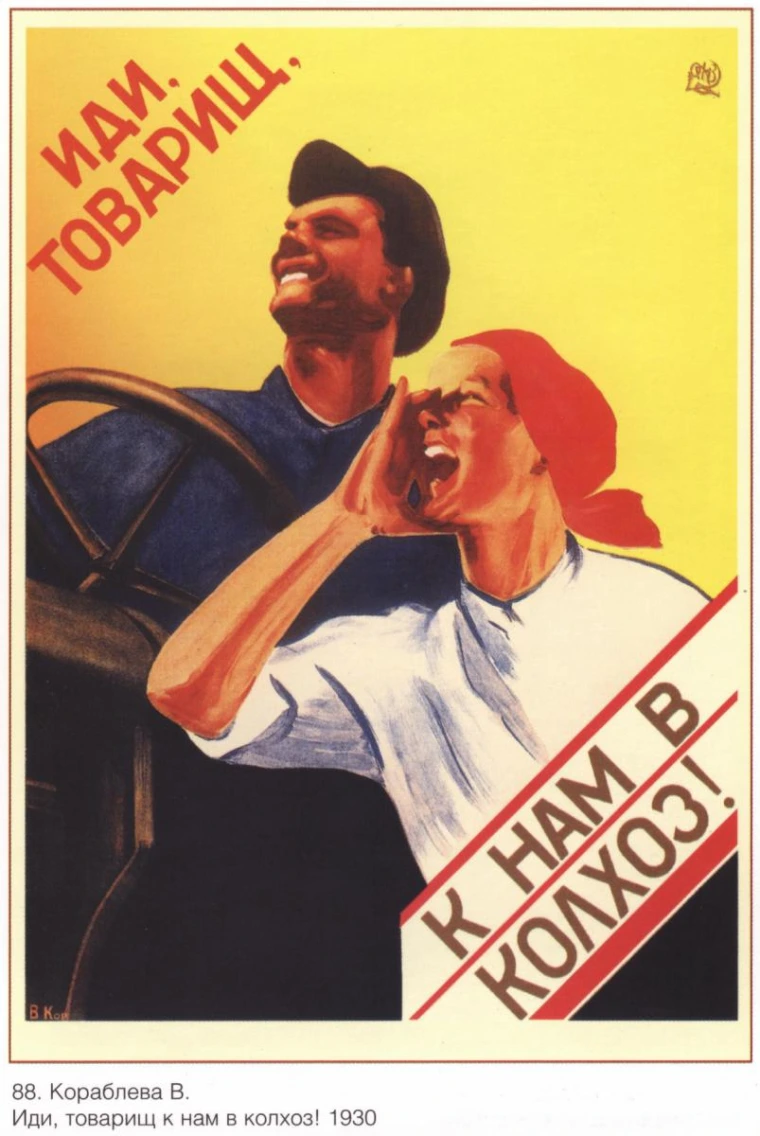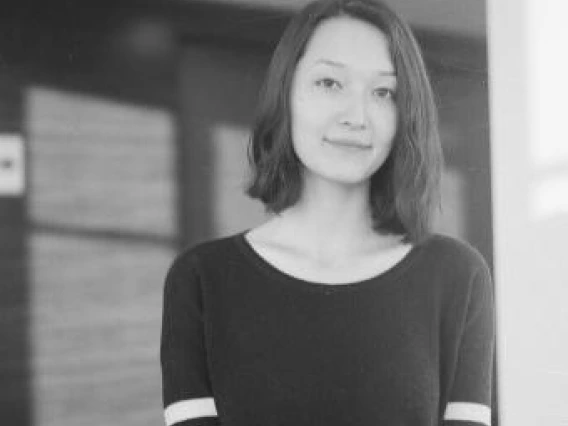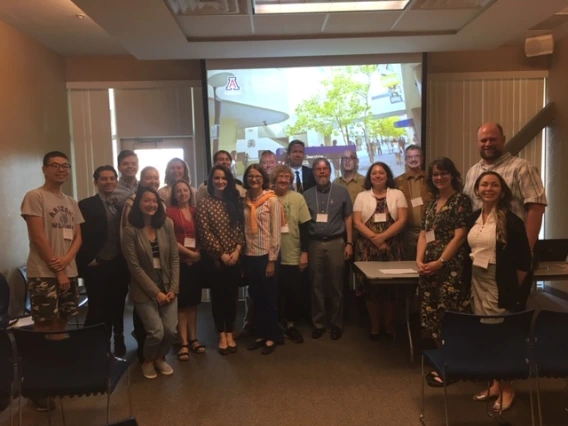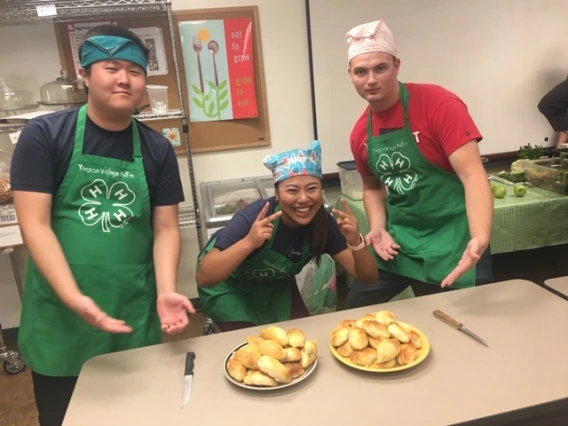Collaborative digital humanities project unites UA Russian and French classes with students in Canada and Kazakhstan
An examination of life near international borders yields the expected divisions between countries and languages, but also evidence of the subtle differences, as well as similarities, that exist in these areas of cultural overlap.
A new research and teaching collaboration, supported by a grant from the University of Arizona Center for Digital Humanities, brings together UA students in French and Russian classes with their peers in two other borderland regions.
The UA faculty members leading the project, Liudmila Klimanova, assistant professor of Russian and Slavic Studies, and Emily Hellmich, assistant professor of French, are guiding students through an interdisciplinary study of three borderlands regions, Québec-New England, Mexico-Southern Arizona, and Russia-Northern Kazakhstan.
“They’re very particular places, borderlands, characterized by a lot of paradoxes,” Hellmich says. “We talk a lot about borders today: at the same time globalization is making us more connected, there’s more building of borders, both real and ideological. We wanted to think about what our students are living and how these conversations could enhance the learning of language and culture.”
Using an array of digital tools, from Internet video conferencing focused on second-language skills, to 360-degree interactive videos and images, the students collaborate on building an interactive digital portal that showcases particular elements of cultural exchange in the border regions. The students partnered with Cégep de Sept-Îles in Québec and Kostanay State University in Kazakhstan.
“Borderlands are unusual. When we have cultures rubbing up against each other, that process creates new forms of thinking and being. It’s mixed and creates new types of cultures,” Klimanova says. “We talk about languages and we see interesting forms of bilingualism. There’s no right or wrong language. They coexist because of the proximity to one another at the border. That exists at the cultural level too.”
Though they’re in different departments, Klimanova and Hellmich have research interests that overlap, both in digital technology as a part of language and culture instruction, but also in borderlands and the coexistence of different languages and cultures in the same location.
“Contemporary borderlands stand as centers of mobility and hybridity, localized epicenters of globalization. In focusing on these areas from a digital humanities perspective, our project seeks to explore how identity and space, both physical and digital, are experienced by borderland youth,” wrote Klimanova and Hellmich in the project proposal. “The project’s central objective is to connect borderland youth, provide a cutting-edge platform that allows students to chronicle the borders marking their lives, and engage them in a critical analysis of borders, both those they routinely experience as well as those experienced by their peers around the world.”
Drawing on academic contacts in Québec and northern Kazakhstan, they designed the project to connect students in their classes with peers in other borderland regions, so students could explore the topic of borderlands together, while also working on language skills.
“Bringing technology to the service of learning, as an instrument of learning, is changing the traditional ways of teaching language and culture,” Klimanova says. “That exchange by itself is a learning moment. For my students, it was a completely new way of looking at borders.”
Klimanova’s students were some of the first foreigners to ever interact with their Kazakhstani peers, who had a much different experience with the border their country shares with Russia than UA students do.
“Being here in Tucson, being close to the border here, is a lot different than the experience the students in Kazakhstan have in being next to the border with Russia. For people here in the United States, the border with Mexico is a huge topic, but when I talked to some of the students there, they didn’t feel like they lived next to a border,” says Evan Rowe, a Russian major. “It definitely helped understand the similarities and differences between the two cultures.”
The exchange also served to highlight the linguistic borders that exist between the students, and the permeable nature of such borders.
“People face language barriers, and for me, it’s English to Russian. I studied last summer in Moscow and I’d struggled to get over that border, but using it more and more in this project helped me overcome that,” Rowe says. “It was a different way of utilizing our conversational Russian. Instead of speaking with classmates where we’re all generally on the same level, it was really nice to talk to people whose native language was Russian and the technology gave us the ability to do that.”
In connecting with peers in a country bordering the United States, Hellmich’s students were able to reflect on more commonalities, but still came away with new perspectives on the subtle ways cultural borders exist alongside physical ones.
“The first border that comes to mind in Québec is usually the English-French border, which has a very long history in the region,” Hellmich says. “What came out was my students getting a much better understanding of the language politics of those regions, between French and English, but what was also particularly interesting was bringing in the First Nations, which is another linguistic divide that is very present but that doesn’t get as much attention.”
Even in multilingual communities along borders, the specific history of the region and the mix of languages and cultures involved can create significant differences, says Leticia Marie Harris, a double major in French and psychology.
“We were talking about the types of borders that are here in Tucson, where a lot of people are bilingual in English and Spanish, with people in Québec, where a lot of people are bilingual in French and English,” Harris says. “By sharing our language barriers between the two locations, we were able to find similarities.”
Sharon Coyle, professor of the Humanities World Views course at Cégep de Sept-Îles, said the international virtual exchange placed an emphasis on both borders between countries and on invisible borders that block interactions such as language, class and culture. The experience is something she’d like to continue offering to her students.
“The Sept-Îles students shared their experience of speaking English in a French province within an English-speaking country and they were able to draw comparisons with the experience of French or Spanish speaking individuals in American,” Coyle says. “The Mapping the Borderlands platform and the opportunity to experiment with the 360-degree camera added interesting elements to the online interactions.”
The UA students and their peers all contributed to a digital mapping platform. They could upload their own content, including photos, videos, and 360-degree photos, to an interactive digital portal. The collaborative map features geo-spatially located data documenting the lives of borderland youth, with categories cross-tagged to enable critical analysis.
“This idea of mapping comes into play because we can see the artifacts of bilingualism and put them on the map to show how that diversity plays out in a community. Maps let us see relationships between visible entities like borders and invisible entities like opinions, language affiliations, political stances, and more. Maps give us the ability to see where invisible items like attitudes, opinions, and relationships between entities are localized in the world,” Klimanova says.
“By zooming in on a map and seeing what’s there, they’re able to visually engage with a community at a distance. This is an absolutely fantastic learning tool. It’s very specific, very visual. Students can virtually visit these communities and see through 360-degree imaging what it’s like in that part of the world.”
Through the course of the class, both Klimanova and Hellmich say their students began to perceive of borders in different ways—national, linguistic, cultural, personal—that all have more potential to explore.
“We want this digital humanities pilot project to become more public and more global and serve as an intercultural exchange. We’ll look at as many borderlands as we can capture,” Klimanova says. “It’s a critical issue in the community and a way to see your community through the eyes of another perspective. That’s the kind of language education we want. The conversations have a purpose, to share ideas and explore concepts.”
